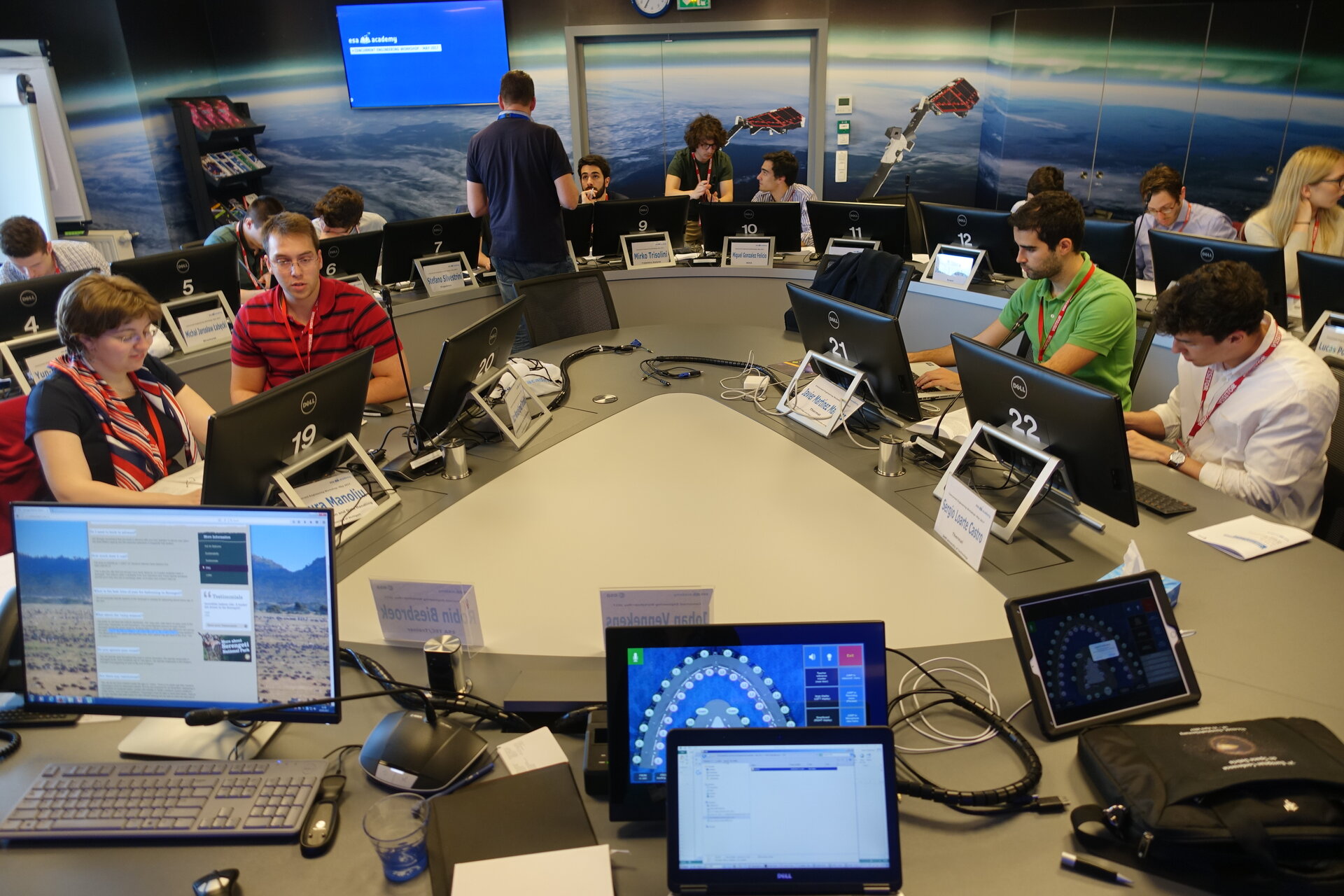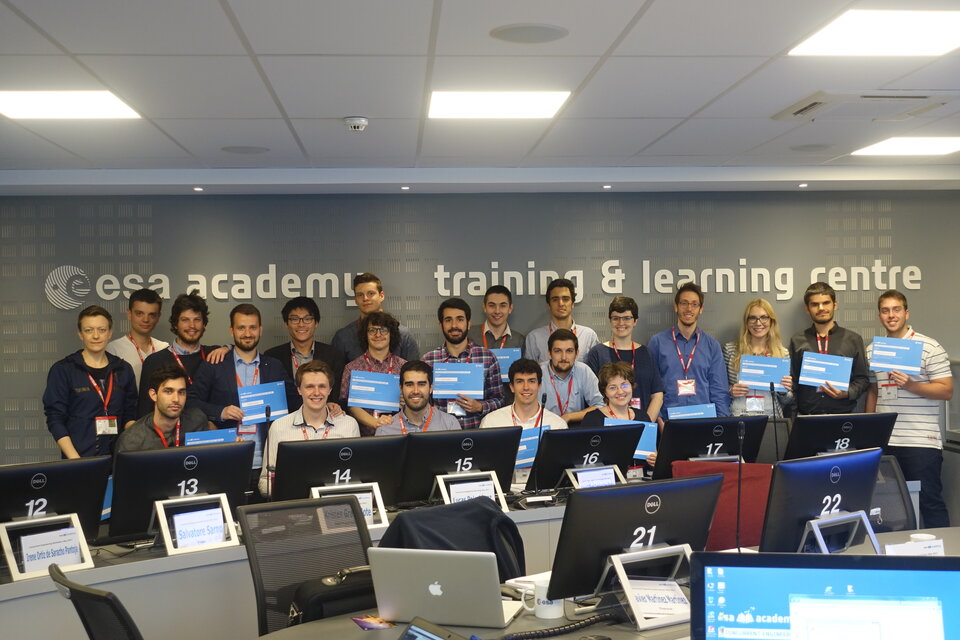Students design a space system to help protect elephants
A group of university students completed the ESA Academy’s third Concurrent Engineering Workshop with a difficult challenge: to design a satellite that would track African elephants!
African elephants are powerful animals, and an inspiring sight for anyone fortunate enough to see them in the wild. Unfortunately, their huge ivory tusks are prized by poachers. Ivory trade is internationally prohibited, but poachers nonetheless manage to find people willing to pay large sums of money for precious ivory on the black market. If this continues, African elephants could disappear from the wild within just a few decades.
The war against ivory trafficking is fought on many fronts, and rangers are in the frontline. However, rangers cannot guard every elephant all the time, and poachers try to be one step ahead. Rangers need an eye in the sky to give them an edge, and this formed the theme of the workshop.
The 21 students were asked to plan a mission that would allow to track African elephants without the need for transmitters, and for information to be rapidly sent to rangers on the ground. The mission, which was called High Accuracy Telescope for elephant Herd Investigation (HATHI), would consist of a space system able to operate for a prolonged duration, with high resolution instruments, and a quick revisit time.

The students had four days to design their space mission. Based at the ESA Academy Training and Learning Centre in Redu, Belgium, they were assisted by two experts from ESA's Systems and Concurrent Engineering Section. In Concurrent Design, all subsystems are designed in parallel. It is a challenging but quick and efficient way of designing. The students were taught about the technique’s benefits as well as how to use the Open Concurrent Design Tool (OCDT). A Portuguese student from the Technical Institute of Lisbon (Portugal) explains, “It was interesting to get to apply the Concurrent Engineering concept with experts in the field. It completely changes the concept of teamwork, and I believe it is the future of engineering design.”
During their first evening, the students played a board game called “Eco Design Game”. It gave them the opportunity to learn more about the environmental impact of a space mission, as well as a chance to get to know one another.
On the first day of the workshop the students were introduced to the Concurrent Engineering approach and the Open Concurrent Design Tool (OCDT). They were also given their mission brief, and divided into teams to cover the following subsystems: configuration, structure, propulsion, mission analysis, attitude and orbit control subsystem, power, thermal, optics and sensors, communication and data handling, and life cycle assessment.
During the second and third day, each team worked on their subsystem, and a first concurrent engineering iteration of the mission was performed. The ESA trainers soon realised that the mission was more complex than they had initially expected, but the students rose to the challenge. They persisted despite numerous setbacks and finally completed the first iteration. In the words of a Portuguese student from ISAE-SUPAERO (France), “It was fascinating to be part of an actual satellite designing team and have to deal with the different subsystems to make the project evolve. It was sometimes stressful and frustrating to fit the timing and demands of the other teams with ours, but we felt a huge accomplishment at the end.”
The students toured ESA’s Redu Centre, including the Proba operation room. Getting a backstage view of real satellite operations helped to maintain their motivation.
During the following days the students worked hard to refine their designs, even managing to perform a complete second and third iteration in time to present their subsystem designs to their expert trainers, the Head of ESA’s Education Office, and of course all the other participating students.
Their mission design incorporated two satellites in a dawn dusk Sun-synchronous orbit, allowing for rapid revisiting times of key areas on Earth where the elephants would be travelling. The satellites would make use of telescopes of Gregorian design-and a “whisk broom” scanning method imaging areas would be selected by moving a mirror, rather than by slewing the satellite.
ESA experts concluded that the design was indeed feasible, and with a few more iterations could be optimised further. It was even suggested that this could form the basis of a future educational Concurrent Engineering Workshop!
The experience was summed up by a Polish student from AGH University of Science and Technology (Poland): “It is stunning how the Concurrent Engineering approach can improve teamwork effectiveness. I never would have thought that a group of students could design a space mission in just a couple of days. This intensive and thrilling week in Reduguided by top-notch system engineers, allowed me to meet and share time with fantastic people who are passionate about space.”
For more information about ESA Academy opportunities, please visit: http://www.esa.int/Education/ESA_Academy/Current_opportunities
Contact: esa.academy@esa.int



